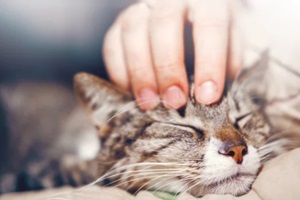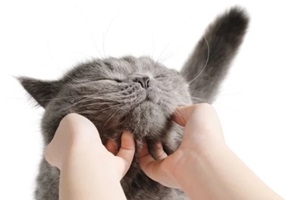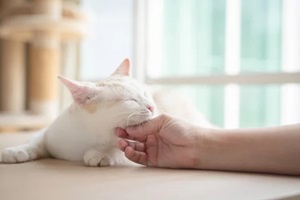 Cats add a lot of personality to any household. Whether your cat is a stoic watcher from a distance or a snuggly companion always on your lap, their personalities have captured the hearts of millions of people around the world.
Cats add a lot of personality to any household. Whether your cat is a stoic watcher from a distance or a snuggly companion always on your lap, their personalities have captured the hearts of millions of people around the world.
For many, one of the most appealing things about a cat is the contented purr for which they are known and loved. Cat sitters and owners alike know that a cat’s purr can say a lot about that animal’s mood and thoughts — but did you know that a cat’s purr is a lot more complicated than just signaling contentment?
In fact, the purring noise has stumped scientists for decades. It can communicate many things, and even the sound’s mechanism was only recently discovered.
Here’s a quick primer on why cats purr and what they might be saying when they do.
How Do Cats Make the Purring Sound?
A cat’s purr is a unique vocalization in the animal kingdom. While plenty of animals can make similar sounds, the way a cat produces this noise is unique.
The thick pads inside a cat’s vocal cords vibrate quickly to create the characteristic purring sound that owners associate with their pets. What’s so interesting about purring is that cats don’t need to continuously engage the muscles in their throat to make the sound; it simply happens.
Similarly, cats create a purring noise without the brain sending a signal to do so! This is significantly different from other animals, which receive a constant signal to vocalize and do so via exhale. Cats, in other words, purr subconsciously and without effort.
Their purr continues whether they breathe in or out, another skill other animals don’t possess. While some scientists continue to advocate for the old model — that muscular oscillations in the larynx produce the purring sound — researchers are constantly learning more about how this interesting vocalization works.
Reasons Why Cats Purr
Why would cats have access to this simple sound that requires no effort (or even conscious thought) from them? Purrs are a form of communication, and they can mean many things:
 Awareness – For kittens, purring is an essential tool. It alerts the mother that the kitten is present, alive, and communicating. Even if the purrs are not audible, the mother can feel the vibrations and know that everything is all right.
Awareness – For kittens, purring is an essential tool. It alerts the mother that the kitten is present, alive, and communicating. Even if the purrs are not audible, the mother can feel the vibrations and know that everything is all right.- Recovery – Some scientists speculate that purring might be one method for a cat to treat their injuries. Dr. Elizabeth Von Muggenthaler, a bioacoustician (someone who studies sounds in nature), has posited that the vibrations created by purring can help heal wounds or broken bones faster. This aligns with other scientific discoveries that vibrations can assist in wound healing.
- Contentment – The big one for pet owners is contentment; a cat may purr or hum when it is happy. This could have arisen as a method of communicating and building relationships with other felines, or it may exist on its own.
- Communication – Purring is part of a cat’s language repertoire, either to communicate with other cats or human family members. Cats may purr when playing to show they are vulnerable and open to play activities. Similarly, cats may purr when grooming their humans — a sign that they are actively seeking to bond and connect, possibly in the same way kittens and their parents do. Many owners have reported that when they are distressed, their cats purr loudly. This could be an attempt to soothe and communicate a sense of safety to ease their human’s tensions.
Schedule Northern Virginia’s Top Cat Sitters
Cats purr for all kinds of reasons, and many owners often notice that the sound and quality of the purr change based on the activity. Pet owners who learn the many unique ways their cat can purr not only foster a stronger bond with their pet — they also become better pet owners.
 Noticing small changes in when or how a cat purrs can be the first sign of distress and tell you a lot about how your animal is feeling. Carrying this information with you when selecting a cat sitter to take care of your pet when you’re out of town will lead to a better outcome for your furry friend, too.
Noticing small changes in when or how a cat purrs can be the first sign of distress and tell you a lot about how your animal is feeling. Carrying this information with you when selecting a cat sitter to take care of your pet when you’re out of town will lead to a better outcome for your furry friend, too.
Being able to communicate with the sitter about what your cat likes and what to look out for means that while you’re gone, your animal can feel as comfortable as possible.
At Paw Pals, we always take the time to learn from owners about exactly how to make their pets feel happy and safe; we want to know what makes your pet tick! Contact Paw Pals if you need a cat sitter, day visits, or other services for your furry friend while you’re away.


